Kobe, from the ropeway. At the top is a restaurant and a few souvenir shaps (of course), and a public herb garden that is quite nice, though a bit bedraggled from too many visitors.
Fortunately help was close at hand. I've often seen these disposable one-use film cameras for sale in convenience stores and shops, and here we had an opportunity to test one. It seemed like fun, it was certainly better than nothing, and if the results were really disastrously bad we'd still be no worse off than without it.
The Fuji "Utsurundesu" single-use camera. "Film With Lens" is a pretty accurate slogan. There's several variants, with iso 400 film as well as 1600 and with various length of film. There's a waterproof version, and yes, there's a Hello Kitty one too. This one is 400 speed film, with 27 shots and a built-in flash. Cost is just shy of 1000 yen - about twice the price of just buying the film itself.
The camera is a snap-together plastic shell with a fixed lens, fixed shutter and a flash. The 35mm film is already wound out in the camera, and as you shoot you wind the film back into the canister. You don't have to rewind it once you're done, and your shots are safe inside the can if anything would happen. The camera store takes out the film and develops it as usual. They send the shell back to Fuji where they put in a new film, attach a new wrapper and send it out to the shops again. It's really a rental camera rather than a disposable one in other words.
On the left, Kobe's Kitano district, with its old European-style buildings. On the right, the ground station for the Shin-Kobe ropeway. The two pictures are taken with the exact same shutter speed and aperture. The left image is in direct, cloudless midday sunshine, while the right one is indoors, with only a shadow-side window and north-facing opening letting in dim light. Despite the large difference in light, the film manages to record both scenes nicely - though the indoor scene is probably near the practical limit for it, as the grain increases a lot.
This camera is a latter-day descendant of the box camera, like the one I wrote about last summer. It aims to be simple to use, robust and inexpensive, and like a box camera it succeeds admirably. The focus distance, the shutter speed and the aperture are all fixed1. The lens is 32mm - that's pretty wide. No focusing errors, ever; with a wide lens and a small aperture everything is more or less in focus. You really have no exposure problems either. Negative film has lots and lots of exposure latitude, so whether you're in bright sunlight or dim shadows you'll still get a usable image. The small flash is only needed for night-time shots or dim indoor light.
This is the most portable camera I've ever used. It weighs 88 grams - less than even the smallest digital camera. It really is small enough to fit in your shirt pocket (and the light weight means your shirt doesn't sag). The shutter emits a discreet "clk" sound that you wouldn't notice a meter away. Apart from the flash there's no need for a battery or external power so you could stuff one of these into your bag and just forget about it until you need it.
And a fair number of here people do just that: they keep one of these in the car. If they get involved in an accident they may need to document the scene and any damage. And they use these not just because of the reliability and cost; film is seen as more trustworthy than digital cameras since it's very hard to manipulate a negative without leaving traces. Just keep one in the trunk and replace it every few years.
The results? Good. In fact, surprisingly good. The small prints we got (9x11) look just fine if a little contrasty; the shop probably use their "holiday snapshots" setting, with lots of color and contrast, when printing from these cameras. They'd be perfect for passing around to friends and relatives. As you can see in the images here they're clearly good enough for web use too.
And a fair number of here people do just that: they keep one of these in the car. If they get involved in an accident they may need to document the scene and any damage. And they use these not just because of the reliability and cost; film is seen as more trustworthy than digital cameras since it's very hard to manipulate a negative without leaving traces. Just keep one in the trunk and replace it every few years.
The results? Good. In fact, surprisingly good. The small prints we got (9x11) look just fine if a little contrasty; the shop probably use their "holiday snapshots" setting, with lots of color and contrast, when printing from these cameras. They'd be perfect for passing around to friends and relatives. As you can see in the images here they're clearly good enough for web use too.
Of course, "good enough" is not the same as "perfect". It has a cheap, plastic lens after all, so it flares a lot, there's plenty of light falloff in the corners (arguably not a bad thing for blue-sky shots like these), fairly low contrast and low resolution. This is a great snapshot camera, but it's a complement, not a replacement for a more serious camera if you are interested in photography.
The medium format camera and the 35mm instant camera pictures, showing the same spot at the same size. My digital SLR camera would end up somewhere in between, though fairly close to the MF shot in resolution. Good to know there's a reason to keep lugging the 6x7-format camera around.
I like this camera - and the idea of this camera - so much, in fact, that I'd like to have one like it for real. I'd basically want a reusable version of this camera with selectable aperture and focus, but still very simple and very compact; something I could throw in my bag and forget about until I need it. It would be a near perfect street camera, backup camera and small camera to take along on business trips. Ritsuko has a Canon Demi half-frame camera; it comes close, though it's completely dependent on its light meter. I'll see what I can find.
Update: My blog entries usually take a fair amount of time to write, and scanning film for the illustrations doesn't exactly speed it up either. Since I first wrote this I got myself a candidate camera that seems to fit my requirements. I'll write about it when I've used it for a while.
Sakaisuji subway line entrance. Late afternoon, bad weather and under cover so it was getting fairly dark already. I used the built-in flash to brighten up the entrance and get the light level closer to the outside street. Grainy, yes, but I feel it enhances this picture.
--
#1 The shutter speed is 1/140 and aperture is f/10 according to Fuji's online documentation. With a 400-speed film it's about right for decently sunny days.

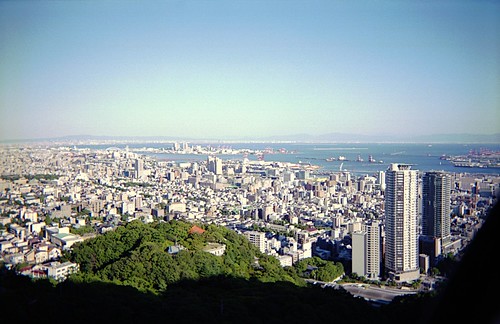
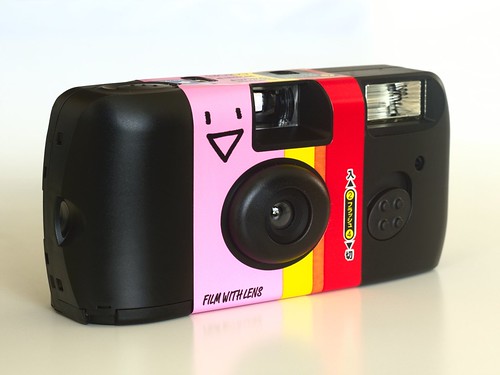
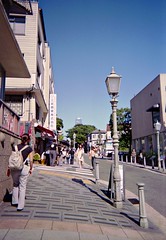


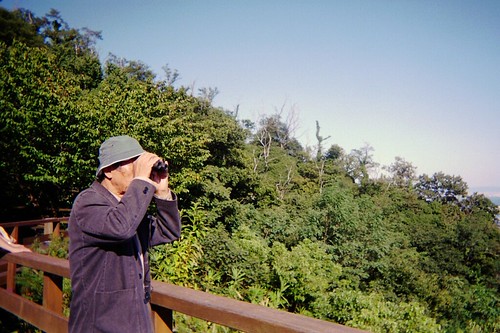
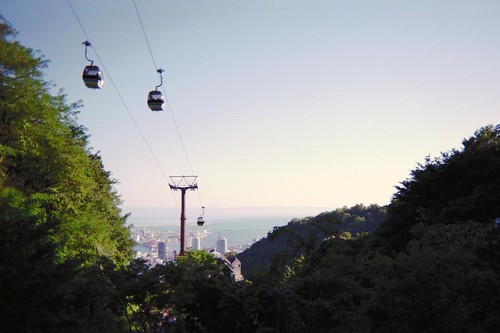

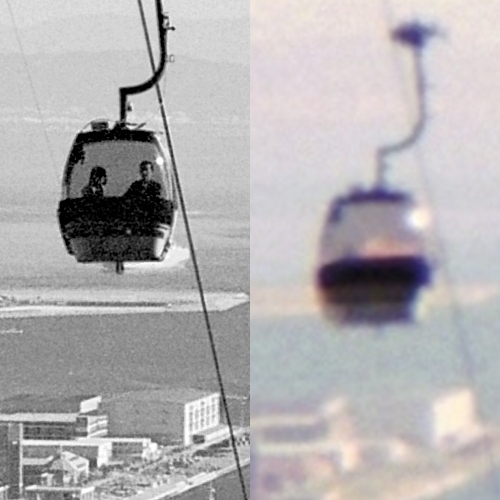
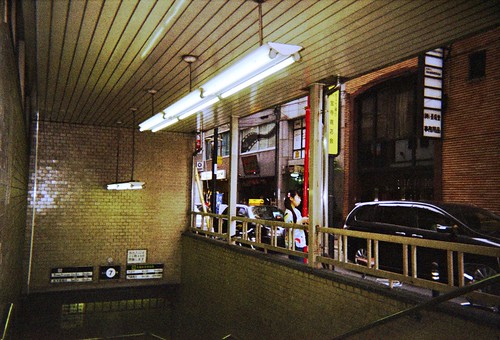
something like an olympus xa2 would probably fit the bill...
ReplyDeleteNever considered the Olympus, or any camera of that age, to be honest. Perhaps I should have. I do tend to prefer completely manual cameras, though, so I'm not sure it would have been a good match. As it is, I've got another camera now that I'm trying out. If I'm happy with it (and it seems I may be) I'll write it up here.
ReplyDeleteOlympus Trip, or Olympus Mju are nice compact film cameras, though they are fairly automated..
ReplyDeleteI have a Ricoh GR1 I really like, unfortunately the LCD display has died.
A Rollei 35 might suit.
http://www.photoethnography.com/ClassicCameras/index-frameset.html?Rollei35.html~mainFrame
RMilner, as I said, I'm trying out a camera now. But your suggestions are mighty close to the mark...
ReplyDelete